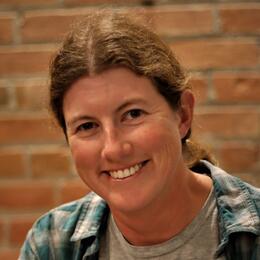Written by Brianna Elliott, Biological Technician
The 2012 nesting season has come to a close on Wrightsville Beach. All nests have hatched, many nesting birds have begun their winter migration, and the nesting postings have been removed or relocated.
Overall, Wrightsville Beach had a very successful nesting season this summer. Nesting occurred at both the north and south end of the island, or Mason Inlet and Masonboro Inlet, respectively. Wrightsville Beach had nests from both colonial and non-colonial nesters this season. Colonial nesters are birds that nest in colonies for added safety to their nests (safety in numbers). For example, if a predator is flying above the colony, they are all able to fly off their nests and mob the predator. These colonial nesters included Least Terns, Common Terns, and Black Skimmers, which Wrightsville has seen nesting for several years now. The non-colonial nesters included American Oystercatchers and Willets.
Nest numbers and the number of nesting adults increased or remained consistent from previous seasons on the south end of Wrightsville Beach, while the north end had a steep decrease in the number of nesters and nesting pairs. At Masonboro Inlet, 597 pairs of Least Terns nested, which was 15-20% of the entire population in North Carolina. However, at Mason Inlet, there were only 13 Least Tern nests.
On the south end of Wrightsville Beach a Black Skimmer chick waits for its parents to return with a fish meal. By Lindsay Addison
The low nesting numbers at Mason Inlet can be attributed to vegetation buildup; since Mason Inlet was relocated in 2003, the vegetation has been flourishing as storms have not been strong enough to wash out the vegetation and no large-scale vegetation removal performed. With too much vegetation, the birds cannot see approaching,predators such as raccoons and red fox that are found on the north end. Additionally, coastal nesting birds prefer flat, sandy areas to nest. Since 2009 these coastal nesters have been moving to the south end, where there is ample habitat.
Audubon staff, volunteers, and the town of Wrightsville Beach worked together to ensure successful nesting at both ends on the island. At least one Audubon staff member or volunteer was present at the south end colony during most daylight hours from May into August. We maintained a presence there for both educational and management purposes. By having coverage at the colony, we ensured that there was minimal human disturbance to birds, nests, and chicks. At the same time, we were able to educate the public on the nesting colony. By approaching beach walkers with an informational bird guide and showing them nesting birds in binoculars or a spotting scope, we attempted to raise public awareness about how these birds utilized this area and what people can do to help protect them. The public response to the colony was generally positive, and people were interested in the colony and happy to have this ecosystem on the beach.
YX, one of four American Oystercatcher chicks to fledge from the south end of Wrightsville Beach. Three of the four chicks were banded so researchers can identify them and track their movements. By Lindsay Addison
Of course, the birds faced several natural setbacks this season; Tropical Storm Beryl passed through Wilmington in late May around the same time of a lunar tide. This high tide combined with heavy rains flooded many of the Least Tern and Black Skimmer nests this season when there was the highest number of Black Skimmers and Least Tern incubating. Other predators, including gulls and crows, occasionally predated eggs or young chicks in the colony, too.
Despite these setbacks, all species had good hatching success. Hatching success is determined by whether at least one egg in the nest hatches or not; if a nest does hatch, it is called a “success.” For the species with large numbers of nests, Audubon monitors a subset of nests in order to determine if the colony is successful or not. All of the American Oystercatcher nests hatched, and 44% and 66% of the monitored Black Skimmer and Least Tern nests hatched, respectively. Half of the Common Tern nests hatched. All species fledged chicks.
The beach-nesting birds on the south end would not have had a successful season without the help of the Town of Wrightsville Beach and the bird steward volunteers. The Town was essential in aiding Audubon by cooperating with the posting effort and removing trash cans that attracted gulls and crows to the colony. Additionally, without the steward volunteers, the colony would have been left without a watchful eye on a public beach for some time each day. A special thanks goes out to both groups.
Marlene Eader was a wonderful ambassador for the birds at Wrightsville Beach and received the Volunteer of the Year award for her dedication to beach-nesting birds and skill at sharing them with others. By Lindsay Addison
It is expected that these beach nesting birds will return to Wrightsville Beach. Of course, barrier islands do change and migrate, but we are hopeful that habitat conditions will remain favorable for the birds when they return next April. If you are interested in becoming a bird steward with Audubon for the 2013 nesting season, please contact Audubon North Carolina’s coastal biologist, Lindsay Addison, at 910-686-7527 or laddison@audubon.org.




